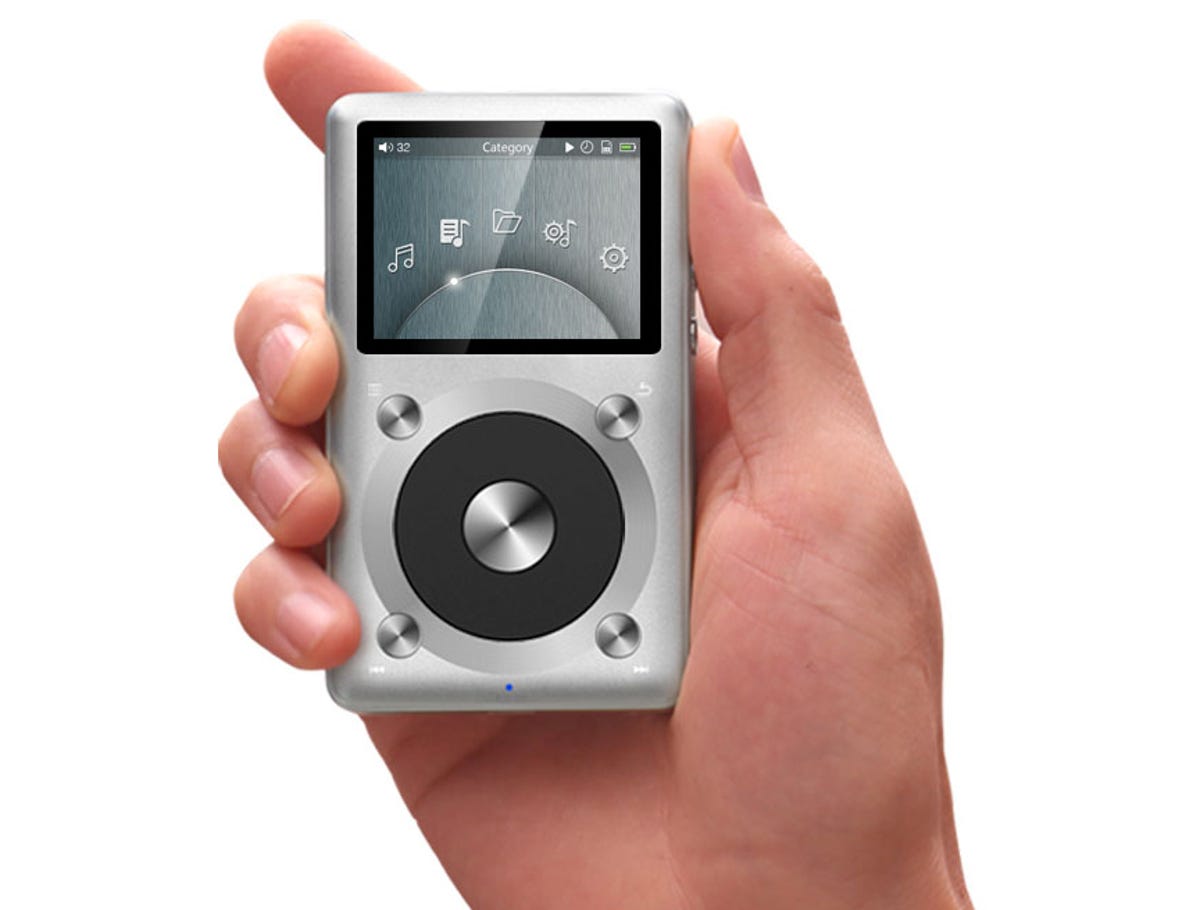
Fiio
Neil Young’s new Pono high-resolution music players are just starting to ship, but Fiio has been making stellar players for years, and all of them sell for less than the Pono. I’m a huge fan of Fiio’s X5 player, but for less than one-third the price of that one we now have the new X1. So if you’re curious about the hubbub surrounding high-resolution music, the price of entry has never been lower.
The all-aluminum-bodied X1 certainly doesn’t look or feel cheap. The user interface is more straightforward than the X5’s — it’s Fiio’s best yet. It’s still nowhere as good as the interface of my iPod Classic, but the X1 sounds better than the Classic, that’s for sure. And unlike on the Apple player, you can easily delete files on the X1.
Sadly, the X1 lacks internal storage, but you can use a microSD card of up to 128GB. Connectivity is sparse, just a 3.5mm headphone jack that doubles as a line output, and a Micro-USB data/charging port. For accessories, you get a slip-on black silicone case and a USB charging cable.
Related stories
- Sony’s tiny high-resolution audio player might be the next big thing
- Why wait for the Pono portable high-resolution music player? The Fiio X5 is here now
- FiiO’s nifty $200 portable high-resolution music player is a knockout
The X1 is the smallest high-resolution music player I’ve seen, at just 3.8 inches by 2.25 inches by 0.5 inch (96.6x57x14mm), and it weighs next to nothing, at 3.7 ounces (106 grams). The 3.7v, 1,700mAH li-polymer lithium battery needs 2 to 3 hours to fully charge and supplies around 10 hours of playback. The X1 plays FLAC, APE, ALAC, WAV, WMA, MP3, AAC and OGG files, with up to 192-kHz/24-bit resolution.
I wish I still had the Sony NWZ-A17 music player on hand, but this little FiiO to my mind sounds richer and fuller, for one-third the price of the NWZ-A17. Granted, the Sony’s user interface is better, and the screen is nicer, but come on, it’s really about the sound, isn’t it?
I auditioned a bunch of headphones with the X1, namely the Audio-Technica ATH-M50x , Bowers & Wilkins P5 S2 , HiFiMan RE400 and Beyerdynamic DTX-350p. Comparing the sound of lossless ALAC files on my iPod Classic and the X1, the latter better resolved subtle differences in the quieter sections of music, so I heard more reverberation and the recording venue’s “room sound.” Treble detail was also clearer on the X1.
Moving on to high-resolution 96- or 192-kHz FLAC files, the clarity gains were more significant — with better-sounding files from audiophile labels like MA Recordings and Reference Recordings, the X1’s sound is phenomenal. That’s because the recordings are great to begin with; Nine Inch Nails or the White Stripes recordings aren’t. Sadly, there’s not a lot of great new rock music out there that benefits from hi-res sound. Most new hi-res recordings don’t sound much better than CDs or standard-res FLAC files.
High-resolution music isn’t a new thing, it’s been around since the early 2000s with the SACD and DVD-A formats, and here’s the weirdest part, most of those hi-res discs were made from old analog master tapes. That’s still true; only a small percentage of new hi-res rock/pop music is digitally recorded in 88.2-kHz/24-bit or higher resolution.
That’s why I’m more concerned with how the X1 sounds playing standard, 44.1-kHz/16-bit lossless FLAC and ALAC files. The X1 certainly delivers with those: the sound is crisp and clear, and the imaging is wide open. As I said, the iPod Classic can’t touch the X1 for sound quality. Then again, if you can afford the next model up in the Fiio line, the X3, go for it. That one adds more muscle to the sound, dynamic kicks kick harder and the treble is more open. The X3 is not as pretty as the X1, but it’s a better-sounding player.
The Fiio X1 sells for $100 in the US, the UK price on Amazon is currently £99.99 with free delivery and you can find it for AU$129 in Australia. The X3 runs $185 in the US, £159 in the UK and AU$239 in Australia.




